Collector’s items such as these find homes all around the world. They’re made with heart and soul, and are full of history. Our collectibles include cuckoo clocks, traditional beer tankards and wood carvings whose unique character and history appeal to people worldwide. People in Japan love wooden toys from the Erzgebirge region of Germany, there are avid collectors of beer steins in the US, and more cuckoo clocks hang on walls worldwide than in their Black Forest homeland.
Cuckoo! Greetings from the Black Forest.
You could look long and hard and still not find out how and why the Black Forest and its cuckoo clocks gained global acclaim. The reason is shrouded in the mists of marketing, as is the identity of the clock’s inventor. What we do know is that 200 years ago clocks in the region were built from wood, and they probably became well known due to a type of preindustrial mass production. The clocks were made through the division of labour, rather than by an individual clockmaker. Many master craft workshops, from bell founders to chain makers, specialised in the manufacture of individual clock parts, which were then assembled as a joint project and sold throughout the world by a travelling sales force. The clocks were relatively inexpensive because they were built from native wood rather than metal.
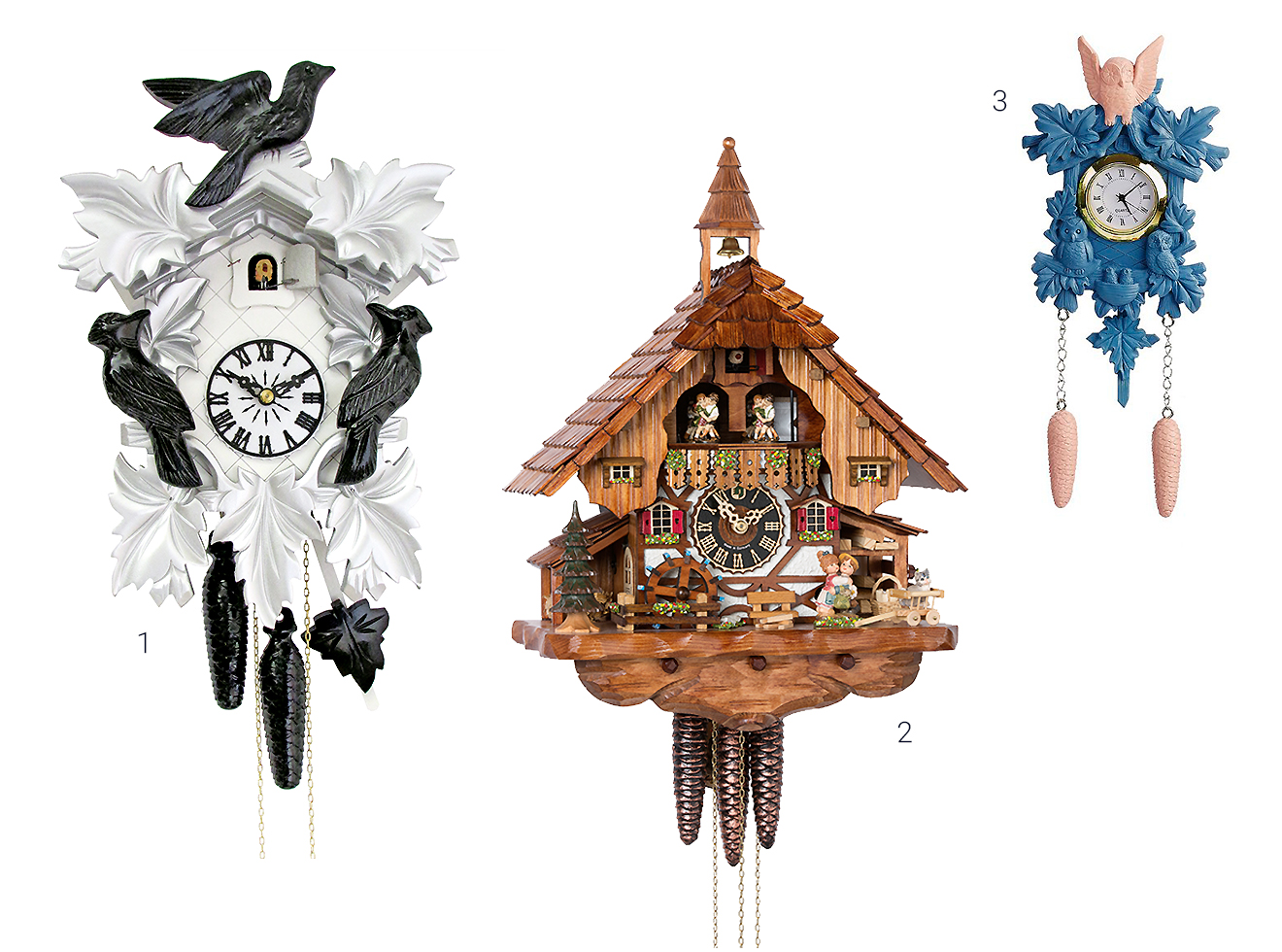
1 Engstler Schwarzwalduhren 2 Hönes Uhren 3 Euro Souvenirs
The familiar ‘Made in Germany’ label is important to Black Forest clocks and may be the most significant part of its DNA. Not all these clocks have a cuckoo to chirp on the hour. Southern Germany’s ‘Clock Route’ runs through the Black Forest and links many of the family-run clockmakers still operating today. They combine long-established craft techniques with the latest technology to create modern wall clocks with quirky designs alongside more traditional models. Many of these clocks travel a long distance to new homes in the USA or Australia. For example, Trenkle makes clocks which are sold in 40 different countries, and around 75% of their products end up hanging on walls outside Germany. Bernhard Trenkle explains the positive image his products enjoy: “They are original, they have a unique reputation – and films have helped spread their fame worldwide.”
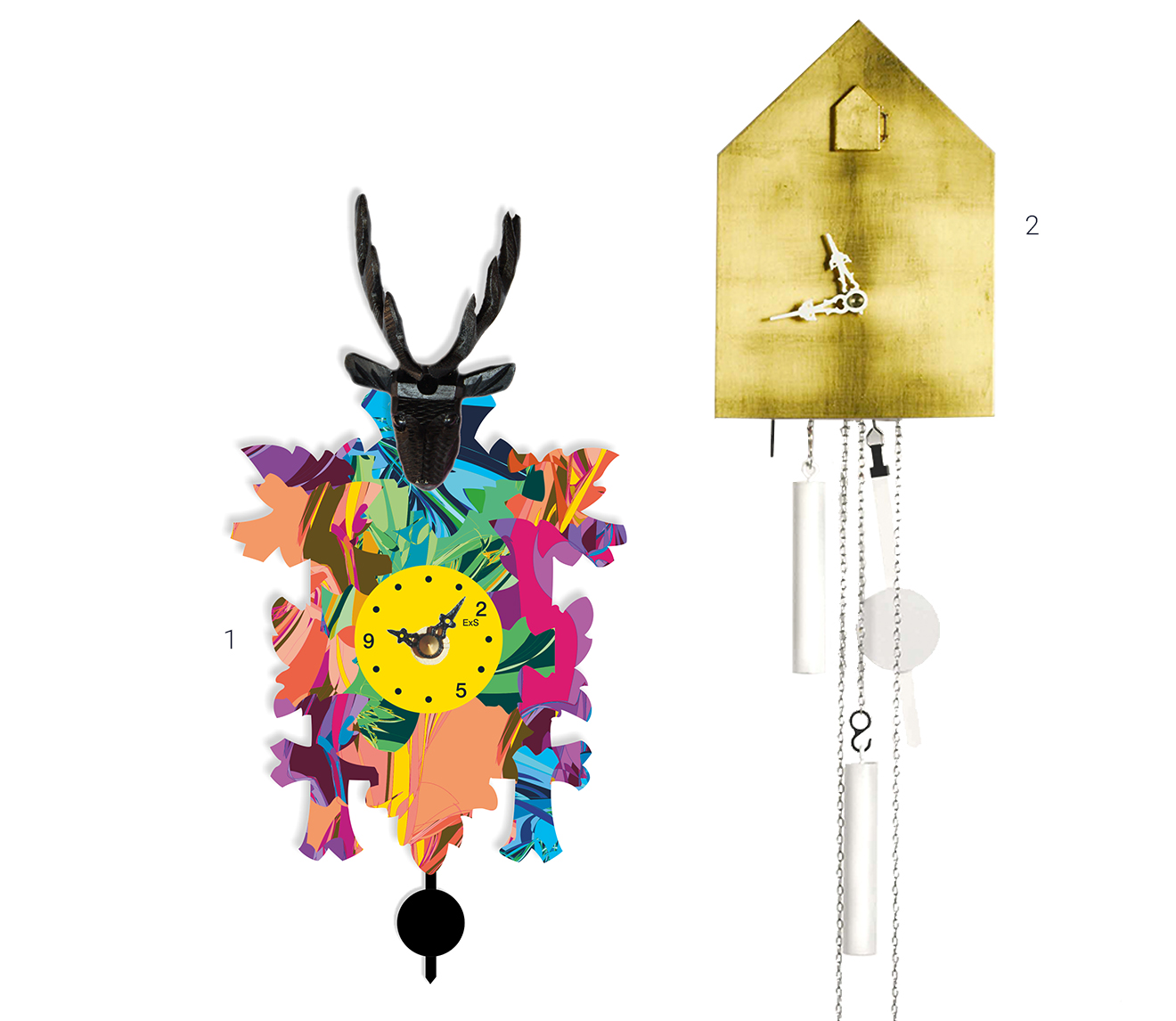
1 Trenkle Uhren 2 Artificial Jürgen J. Burk
Little dream worlds from the Erzgebirge
Handcarved figures from the Erzgebirge (Ore Mountains) in Eastern Germany also have a long history. For many families, decorating and arranging Christmas angel pyramids, wooden figures for burning incense and other carvings is an important festive ritual. They often add new items to their collections each year. Perhaps the best-known figure from the Ore Mountains, who has achieved worldwide fame, is the turned wooden nutcracker figurine in Hussar’s uniform, who was born in Seiffen in 1870. One reason his fame spread is Tchaikovsky’s 1892 ballet The Nutcracker; he also became a favourite souvenir, which US soldiers stationed in Germany in the 1950s sent home for Christmas. The figure is now a traditional Christmas decoration, especially in the USA, where he graces designer shop windows on Fifth Avenue as well as small country cottage mantelpieces.
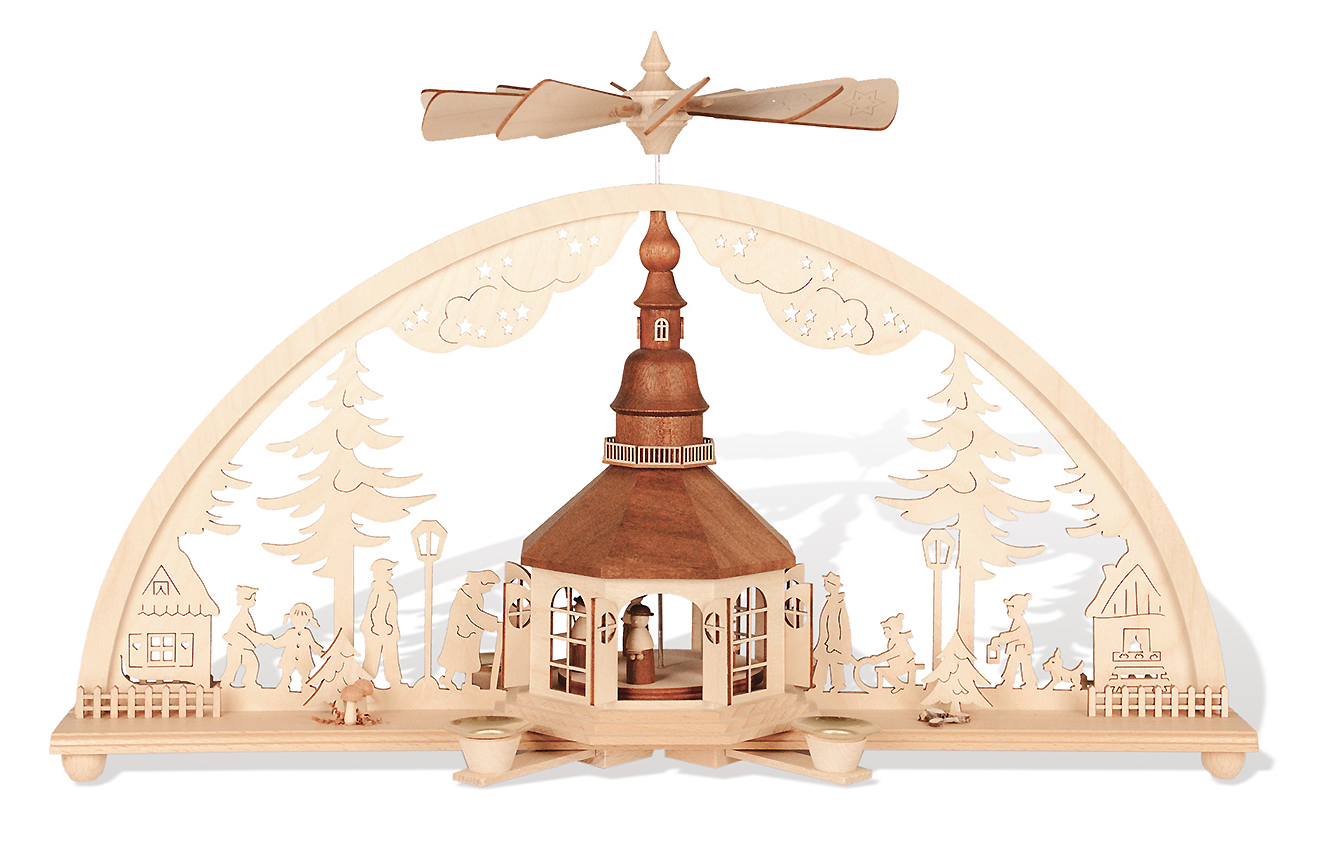
Holznachwunsch
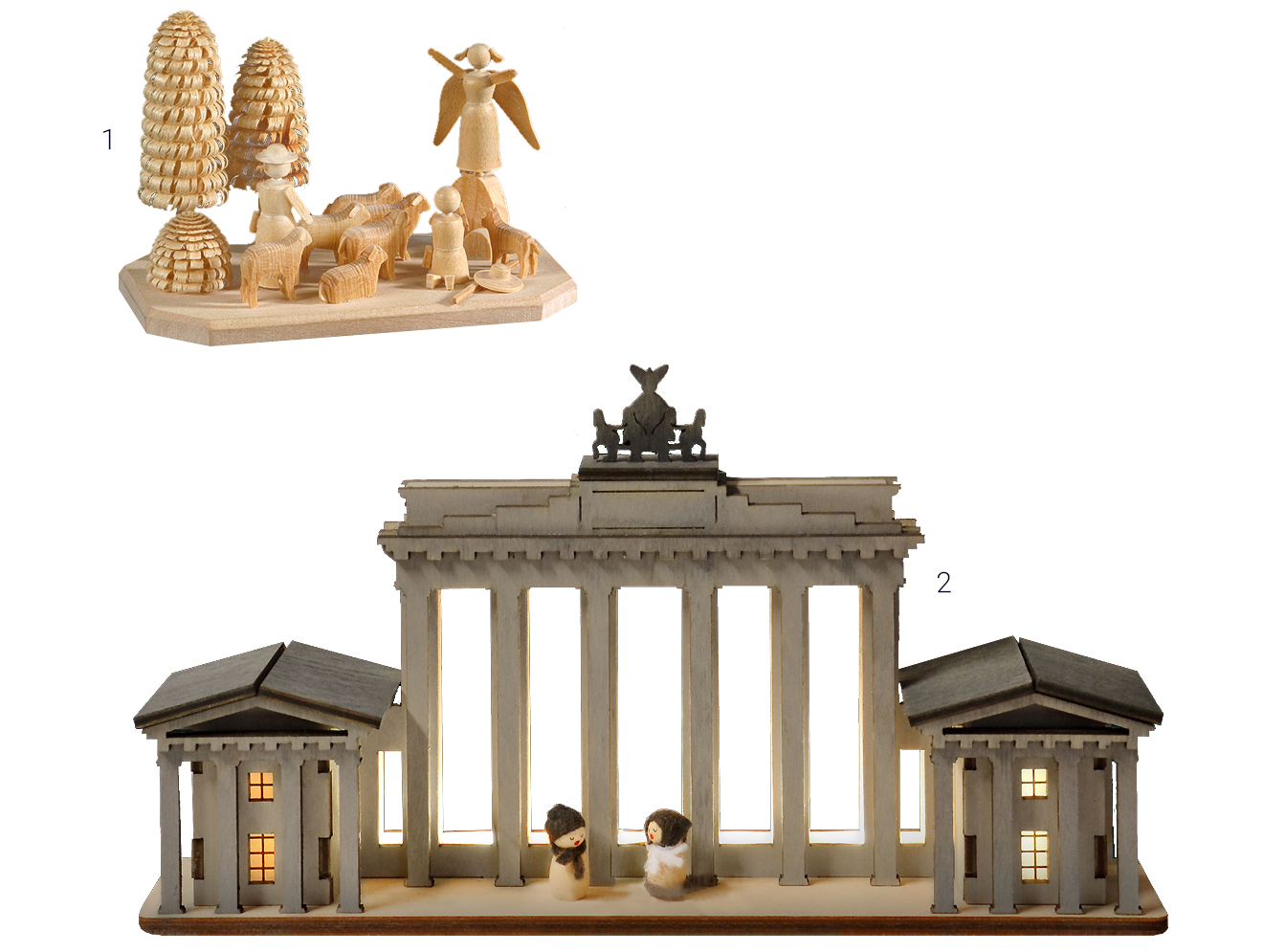
1 Miniaturendrechslerei Uhlig 2 Ratags Holzdesign
Erzgebirge folk art has had a significant influence on the whole region since the mid-17th century, and many traditional producers remain active today. That’s not to say they don’t innovate with their figures, collector’s items and charming worlds in miniature that make the Christmas season a real pleasure for people around the world. The craft workers and designers from the Erzgebirge value creativity as well as a sense of tradition – we found a healthy mix of both in the imaginative designs from craft firm Ratag, such as its Brandenburg Gate scene. There’s also the Nefertiti with incense by the Dregeno wood turners’ cooperative, or the innovative incense figure by Adamas Brass, which is made of stainless steel rather than wood – and is also available in a limited-edition gold version. In Japan, small toys with moving parts are particularly popular, as made in the woodcraft workshops of the Erzgebirge region.
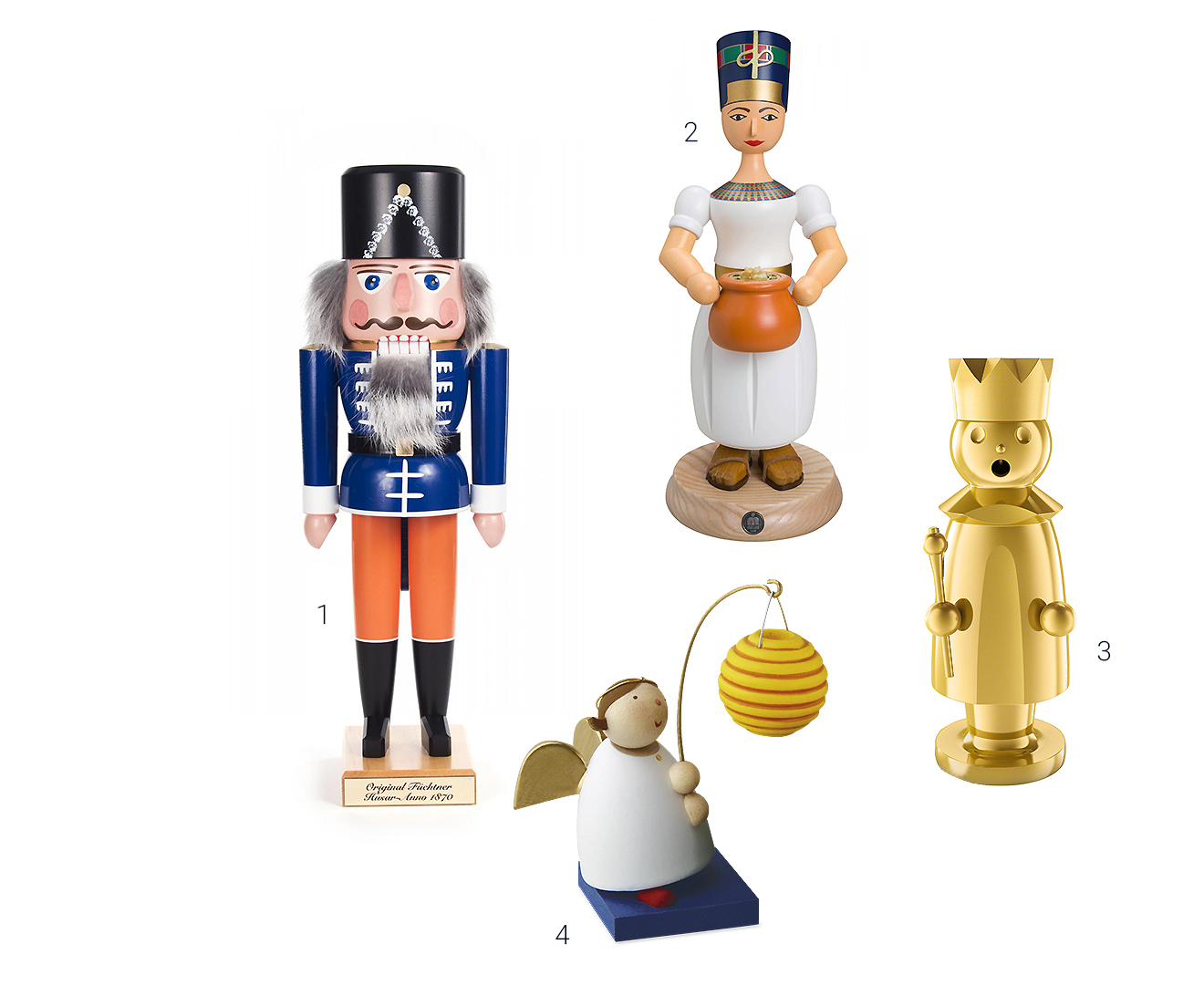
1& 2 Dregeno Seiffen 3 Adamas Brass 4 Günter Reichel
Our love of animals knows no bounds
Although everyone seems to be tidying and decluttering these days, our love for decorative objects and figurines seems to have survived. These small sculptures and collectibles bring a touch of individuality into our living spaces: they conjure up childhood memories and positive impressions. Whether you buy one as a souvenir, a gift or an interior decoration, these figurative representations of animals add a personal touch. Once again, some objects have achieved international fame, such as the willow tree figures by American artist and modeller Susan Lordi, distributed around the world by Enesco. Although executed as abstract woodcut figures, they radiate extraordinary vitality.
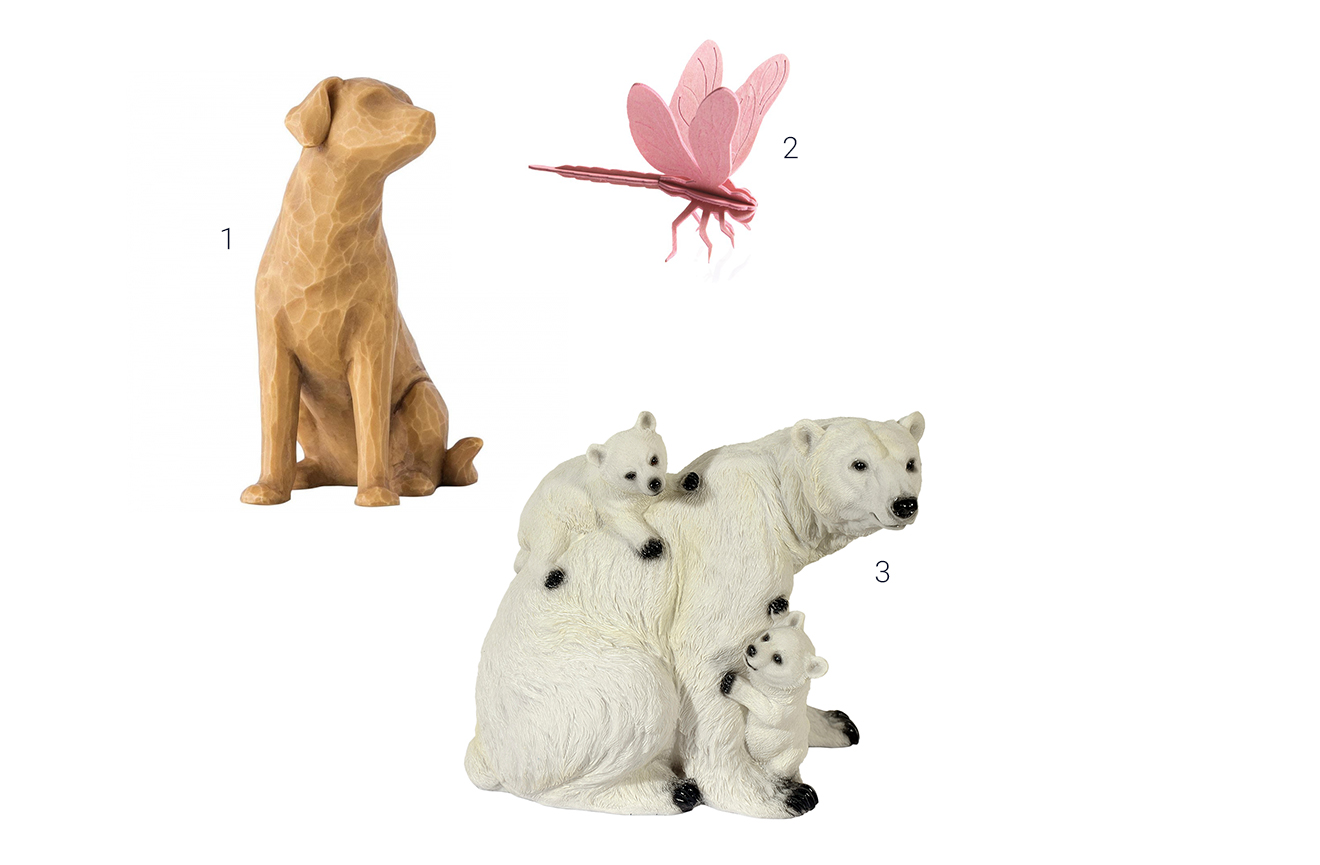
1 Enesco 2 Lovi 3 MystiCalls
One thing is certain: Even the Japanese queen of decluttering Marie Kondo, known for her rigorous removal of anything that doesn’t spark joy, wouldn’t touch our chosen objects and collectibles. These items bring a lot of happiness to everyone – not just specialist collectors – and as we look at them our thoughts have free rein to wander. So whether you’re after animal figures or souvenirs, these items have great emotional value and comfort us, despite their diminutive stature.
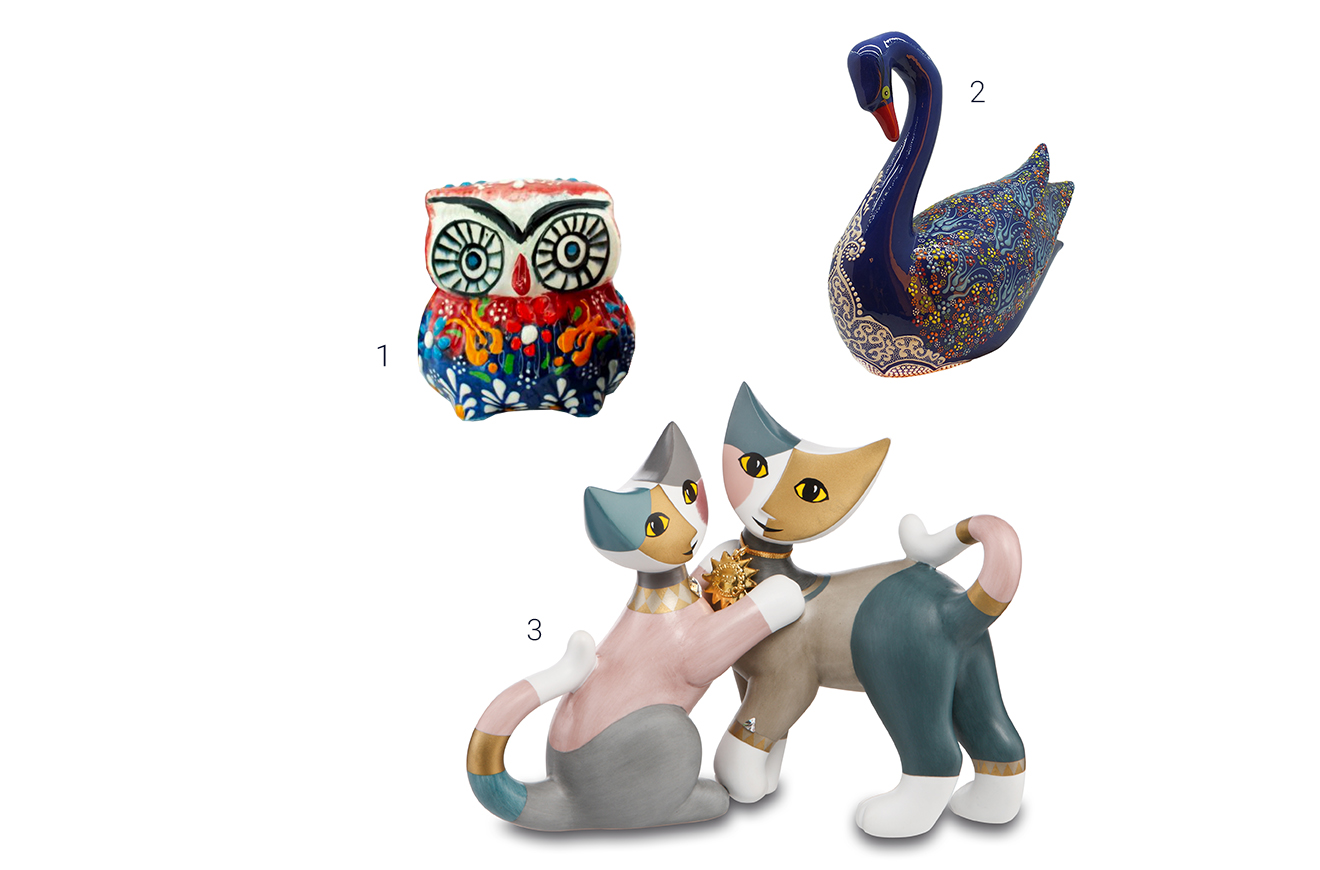
1 GND Gift 2 Myros Wholesale Gifts 3 Goebel Porzellan
Solid, beautiful collectibles
For decades now, the traditional souvenir from Germany has been a beer stein, perhaps decorated with a tourist image or a saying. Traditional manufacturers Zöller & Born from Westerwald offer over 500 models featuring both older and more modern subjects, from the Oktoberfest to the Berlin Wall. Souvenir shops throughout Germany sell these handmade steins to tourists, who take them all over the world in their luggage. Clearly, the stein owner may use it to drink from, but it is first and foremost a souvenir full of fond memories of Germany. Indeed, emotions play a major role with all collector’s items, and this is as true of beer tankards as it is of historical bronze figures which take our imaginations on flights of fantasy.
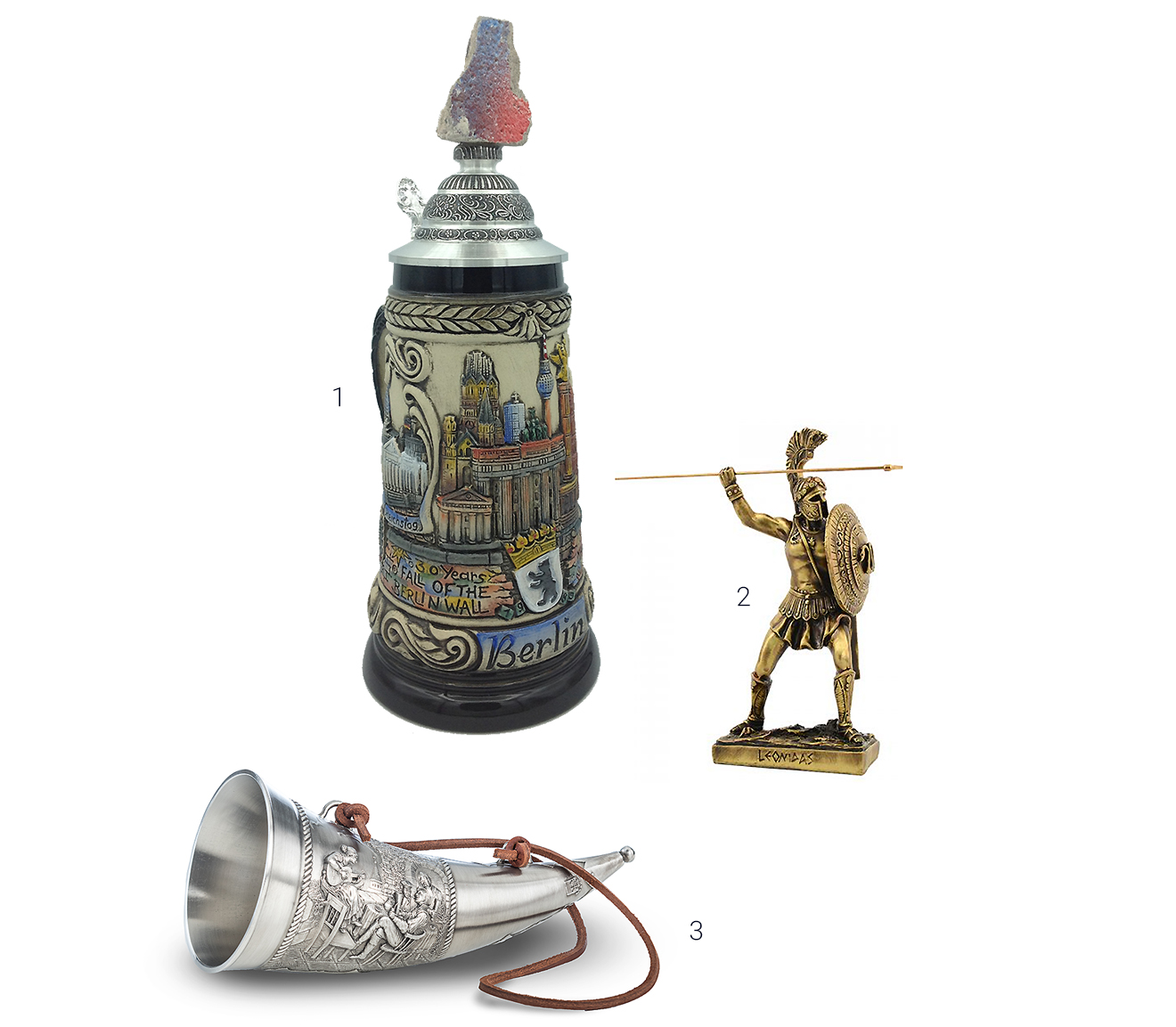
1 Zöller & Born 2 Marinakis & Co 3 Artina
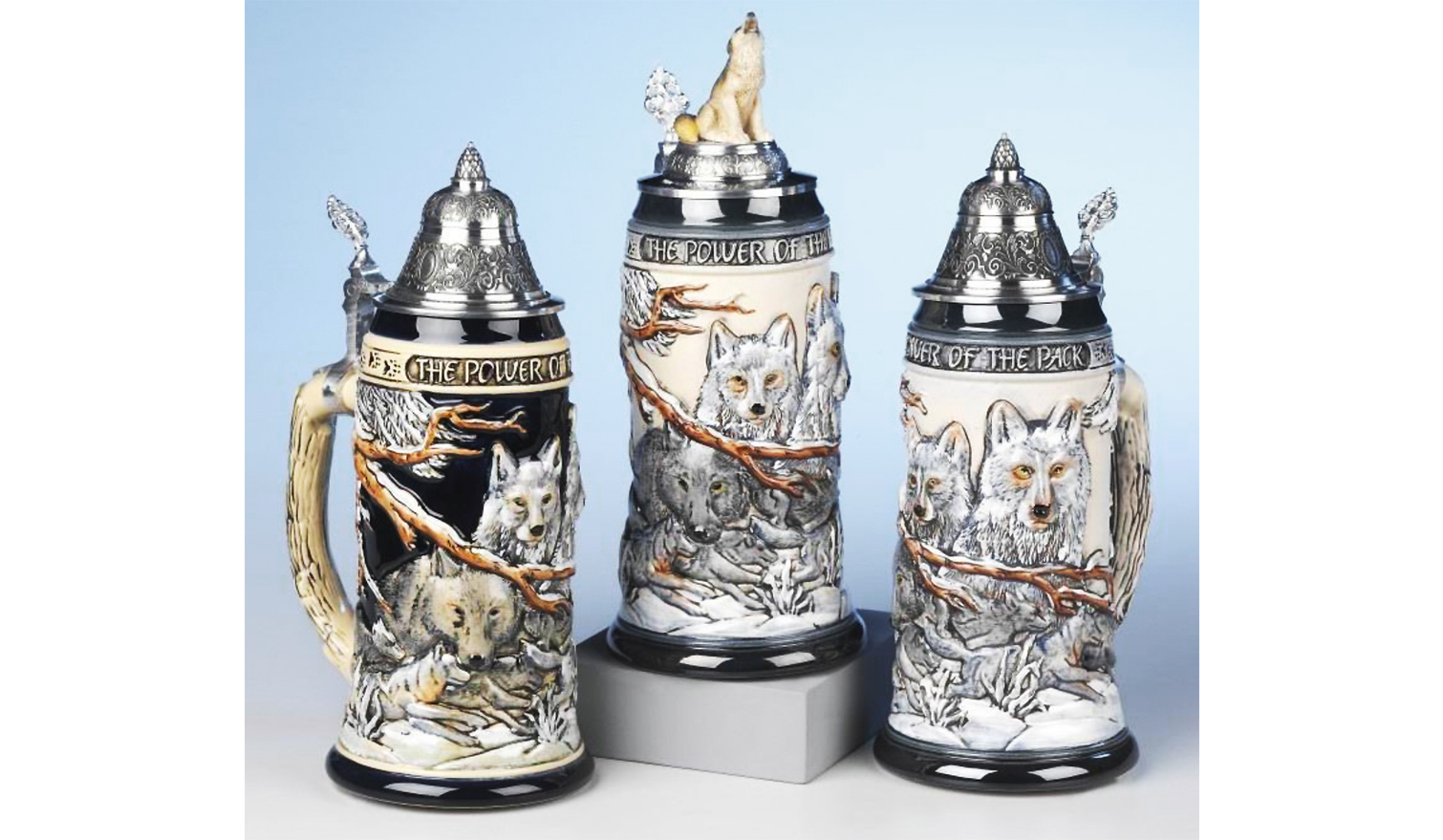
King-Werk
Article from https://ambiente-blog.com/sweet-memories/
AMBIENTE //7 – 11 February 2020 // Frankfurt

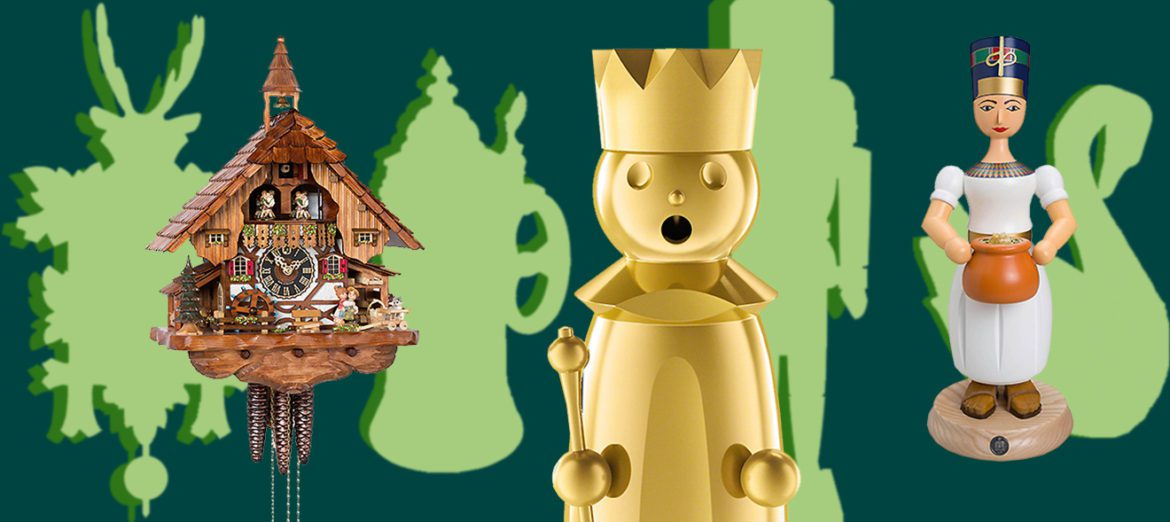


NO COMMENT